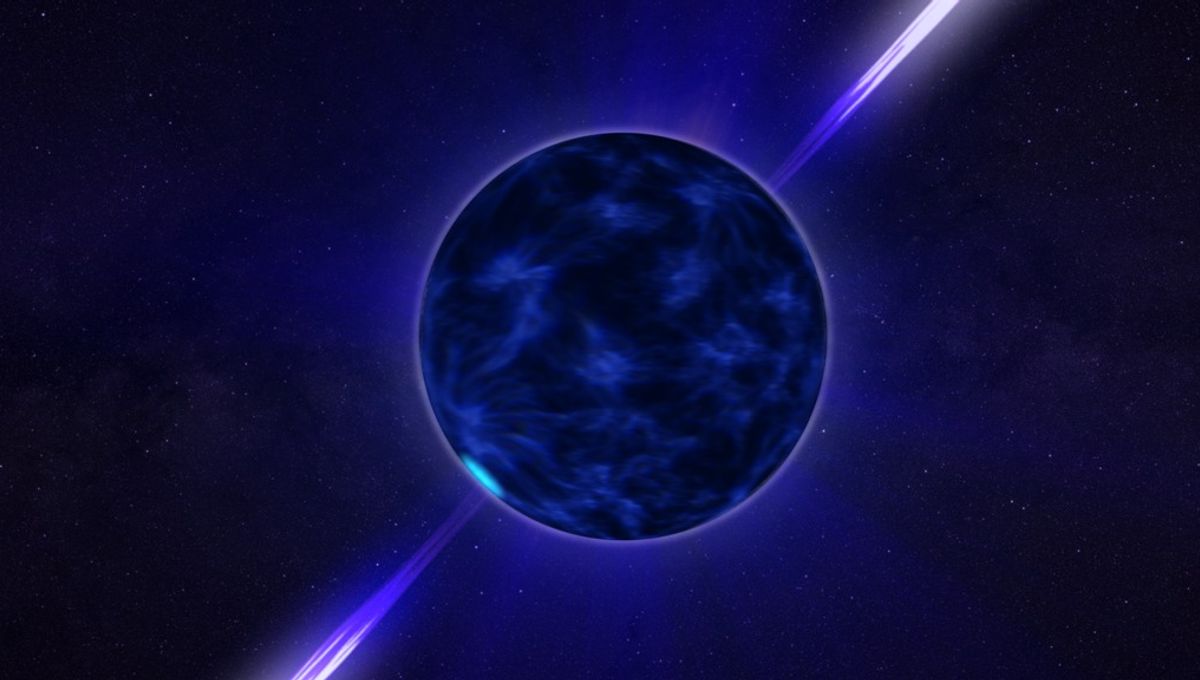
Neutron stars are among the densest objects in the universe. Their crust is far stronger than any material on Earth and a spoonful of this matter is heavier than a mountain. Talking about mountains, if they exist on neutron stars, some have hypothesized that they might be just a few millimeters tall. New work suggests that if such deformations are present on the surface, then we could detect them with gravitational wave observatories.
Anything with mass that is moving is generating gravitational waves – tiny vibrations in space-time. However, only the most extreme objects in the universe emit waves at a frequency that current observatories can catch. That’s why all detections so far have been collisions between black holes or neutron stars.
Those events are akin to throwing a pebble in a pond, but there are vibrations all the time. Some of them might end up making the Gravitational Wave Background, but the effect of small deformations on neutron stars in our galaxy could be detected as continuous gravitational wave signals from our current detectors: the two LIGO, Virgo, and Kagra.
“There are many ongoing searches for continuous [gravitational waves] from such stars. Present detectors are sensitive, in the best cases, to mountains that are 1000 times smaller than the maximum mountain that the crust can support. Unfortunately, we do not know the size of [neutron star] mountains,” the authors wrote in the new study.
That is a crucial factor. Neutron stars are objects left over by a massive (but not too massive) star going supernova. Matter in these objects experiences forces at the limits of physics and how exactly it behaves is not fully understood. Some hypotheses suggest the matter is arranged in structures known as nuclear pasta. Maybe these can arrange themselves in a way to create the deformation of the surface, where these mountains would imprint a particular signal onto gravitational waves.
The team likens that possibility to different worlds in the Solar System. Europa and Enceladus have an icy hard crust and a deep water ocean. The surface is wrinkled by the motion of the water underneath. On Enceladus, these features are known as tiger stripes, while on Europa they are a crisscross of lines.
But you do not need a liquid interior. Mercury has a thin crust and a large metal core, and the smallest planet too has peculiar features on its surface: curved step-like structures. If the crust of neutron stars is not the same in every direction, it can also lead to the formation of structures that we might call mountains.
Finding them should be possible, but the people working with the gravitational wave detectors need to know what they are looking for. These instruments can see variations smaller than the diameter of an atom over a few kilometers – they are extremely sensitive. They are so sensitive that quakes, sea waves, etc., create noise. Knowing what to look for is key. This paper might be an important step in finding these continuous gravitational waves.
The study is published in the journal Physical Review D.
Source Link: "Mountains" On Neutron Stars Could Be Detected With Gravitational Waves